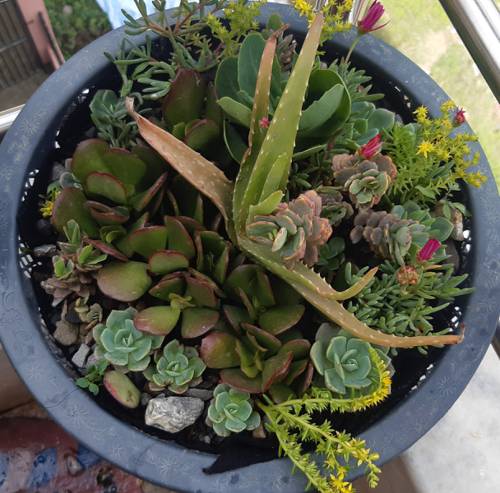
FAQ About Indoor Plant Composting for Enhanced Growth

What is indoor plant composting?
Indoor plant composting is the practice of recycling organic waste material to create nutrient-rich compost, which is used to improve the soil quality for plants growing indoors. This method involves using kitchen scraps, plant trimmings, and other biodegradable waste to produce a natural fertilizer that enhances plant growth without the use of chemical fertilizers.

What materials can be composted indoors for plant growth?
Materials suitable for indoor composting include fruit and vegetable peels, coffee grounds, tea bags, crushed eggshells, and small amounts of shredded paper or cardboard. Avoid composting meat, dairy, or oily foods indoors to minimize odors and pests. Also, ensure the materials are chopped into smaller pieces to speed up the breakdown process.

How does indoor composting benefit plant growth?
Indoor composting enhances plant growth by adding essential nutrients like nitrogen, phosphorus, and potassium to the soil. It improves soil structure, increases water retention, and encourages beneficial microbial activity. This results in healthier, more robust plants that can resist diseases and pests more effectively.

Can indoor composting be done without a compost bin?
Yes, indoor composting can be done without a traditional compost bin using methods such as vermicomposting with worms or using bokashi bins, which ferment organic waste right under the sink. These methods are compact and less likely to create odors, making them ideal for indoor composting in limited spaces.

What is vermicomposting and how is it used for indoor plants?
Vermicomposting is a method of composting that uses worms, typically red wigglers, to break down organic waste. The worms consume the waste and excrete nutrient-rich castings that can be added to the soil of indoor plants. This process is efficient and can be done in small, contained setups perfect for apartments or homes.

How do you maintain a compost bin for indoor use?
To maintain an indoor compost bin, keep it well-ventilated and ensure a good balance between 'green' nitrogen-rich materials (like fruit scraps) and 'brown' carbon-rich materials (like paper). Regularly mix the compost to aerate it and check moisture levels to ensure they are similar to a damp sponge.

Are there any odor concerns with indoor composting?
Odor can be a concern with indoor composting if the compost bins are not managed properly. To minimize odors, add brown materials to balance moisture, avoid composting overly wet materials, and ensure proper aeration. Bokashi bins and vermicomposting setups are often used as they tend to produce minimal odors.

What are some common mistakes in indoor composting?
Common mistakes include adding too much of one type of waste (imbalanced green to brown ratio), not aerating the compost, allowing it to become too wet or too dry, and adding inadvisable items like meat or greasy foods which attract pests and cause odors. Monitoring and adjusting regularly can help avoid these issues.

What size should an indoor compost bin be?
The size of an indoor compost bin varies depending on the amount of waste you generate and the space available. Generally, a bin that holds 3-5 gallons is sufficient for small to medium household waste. Be sure to leave space for aeration and occasional mixing.

Can you use indoor compost directly on potted plants?
Yes, compost created from indoor waste can be used directly on potted plants. It can be mixed into the potting soil before planting or used as a top dressing for existing plants. The compost should be fully decomposed to avoid introducing pests or diseases.

How long does it take for indoor composting to produce usable compost?
The time required to produce usable compost indoors can vary, but typically it takes about 2-3 months with regular maintenance. Methods like vermicomposting and bokashi may speed up this process to as little as a few weeks under optimal conditions.

Can all types of indoor plants benefit from composting?
Almost all indoor plants can benefit from the nutrients provided by composting, including common houseplants like pothos, snake plants, and peace lilies. However, some plants have specific nutrient needs, so it's important to research each plant's requirements.

Is it necessary to use commercial compost for indoor plants?
It's not necessary to use commercial compost for indoor plants if you can create your own compost at home successfully. Homemade compost can be just as nutritious and environmentally friendly, aligning with sustainable gardening practices.

What is bokashi composting and how does it work for indoor use?
Bokashi composting is a fermentation process that uses a specialized bran inoculated with beneficial microorganisms to break down organic waste in a sealed container. The process is anaerobic, producing less odor, and the resulting material can be added to soil or outdoor compost piles once the process is complete.

How do you prepare kitchen scraps for indoor composting?
Preparing kitchen scraps for indoor composting involves collecting suitable materials such as vegetable peels, coffee grounds, and tea bags, then cutting them into smaller pieces to increase the surface area for faster decomposition. Avoid using items like meat, dairy, and oils to reduce the risk of attracting pests and generating odors.

How often should you turn or mix indoor compost?
Indoor compost should be turned or mixed every few weeks to help aerate the mixture and speed up decomposition. Proper aeration ensures that the microorganisms breaking down the material have sufficient oxygen, which is crucial for efficient composting.

Are there any indoor composting systems that are especially efficient?
Yes, there are several efficient indoor composting systems such as worm bins (vermicomposting) and bokashi bins. Both systems are compact, produce minimal odor, and can process waste relatively quickly, making them ideal for small apartments or homes.

Can you reuse soil enhanced with indoor compost continuously?
Soil enhanced with indoor compost can be reused continuously, but it is recommended to periodically refresh it with new compost or additional nutrients to maintain its fertility. Over time, plants may deplete certain nutrients, so revitalizing the soil ensures healthy plant growth.

What are the benefits of using indoor composting over chemical fertilizers?
Indoor composting offers the benefit of recycling waste while providing a natural source of nutrients for plants, reducing the need for synthetic fertilizers. It improves soil structure, supports soil health by fostering beneficial organisms, and reduces the environmental impact associated with chemical fertilizers.

What should I do if pests appear in my indoor compost bin?
If pests appear in your indoor compost bin, try covering the contents with a layer of leaves or paper to reduce odors and moisture. Ensure the bin is securely closed, avoid adding meats or oily foods, and consider adding a layer of soil to create a barrier between the waste and the air.
